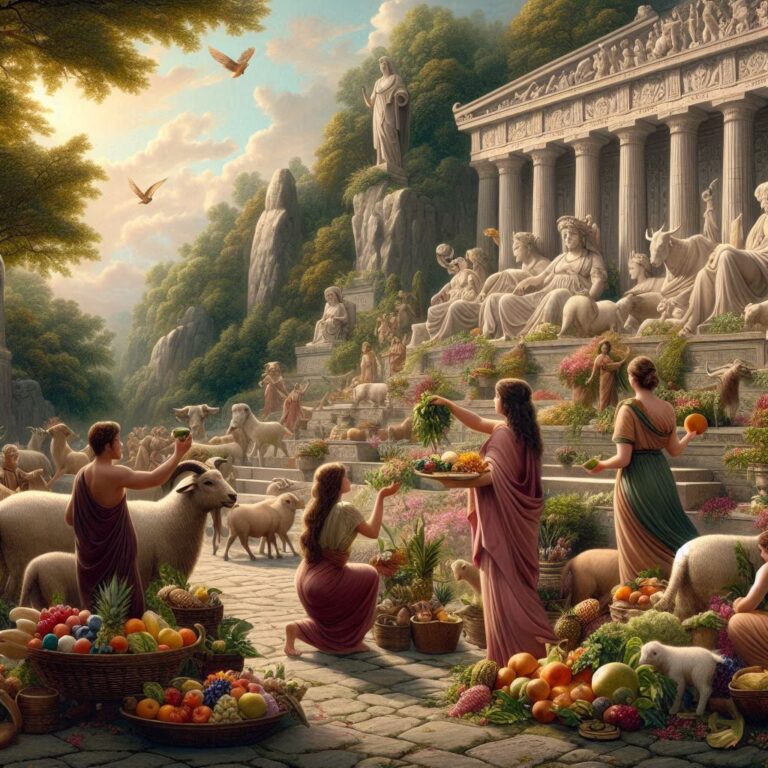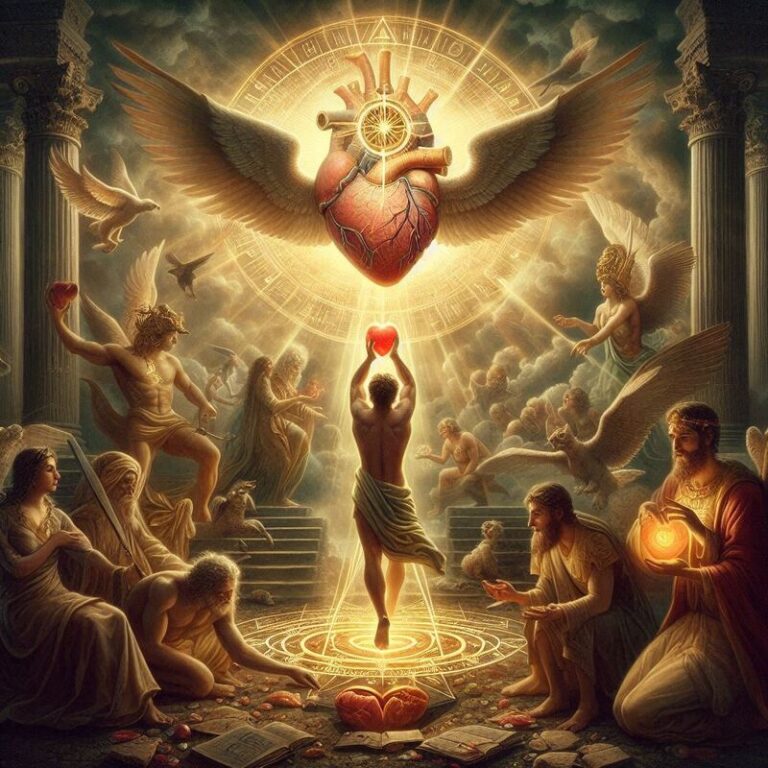The Aztec Tradition of Human Sacrifice
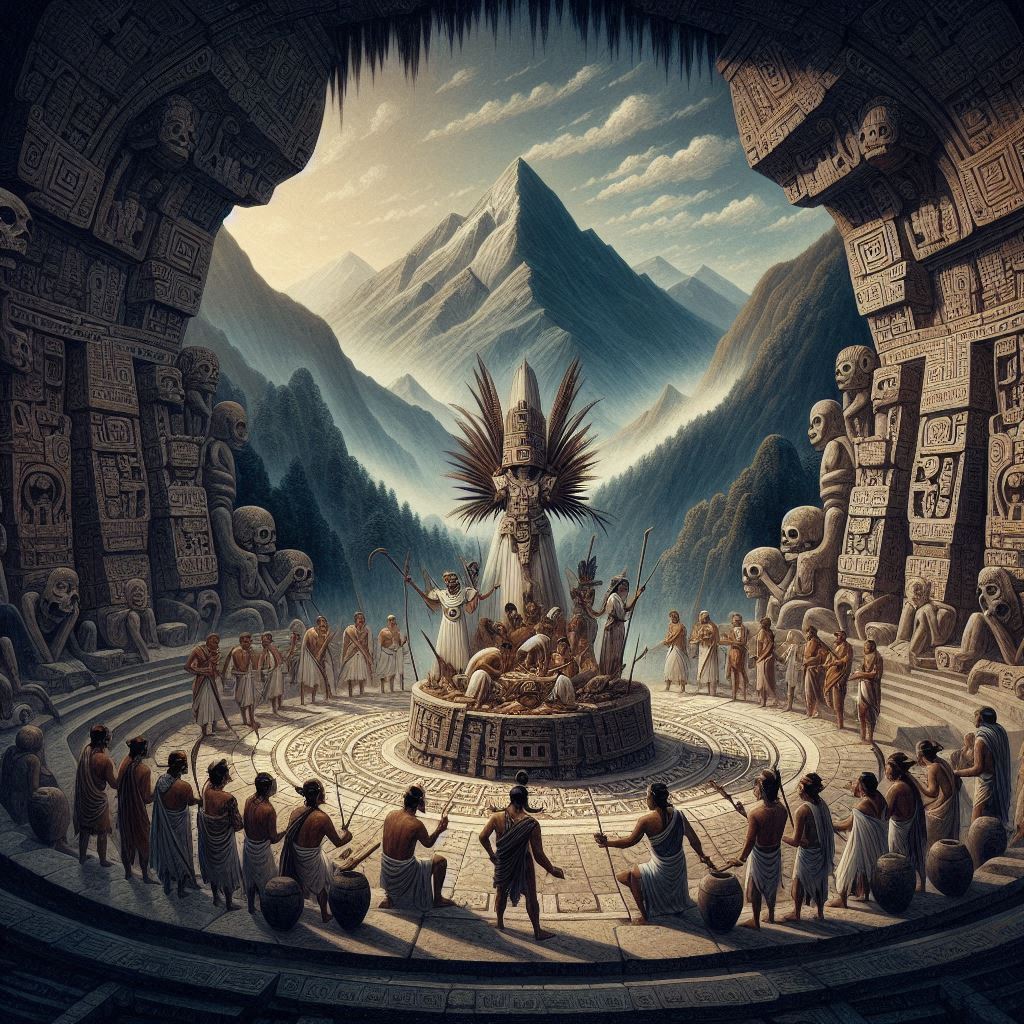
The Aztec Tradition of Human Sacrifice
Sacred Ceremonies: The Aztec Tradition of Human Sacrifice
The Aztec Empire, a civilization renowned for its rich culture, intricate artistry, and sophisticated societal structure, also held deeply rooted religious beliefs that permeated every aspect of daily life. Central to these beliefs was the practice of human sacrifice, a ritual that, though difficult for modern sensibilities to comprehend, was integral to maintaining cosmic order and appeasing the gods. Understanding the role of human sacrifice in Aztec society provides profound insights into their worldview and the sacred ceremonies that defined their religious practices. The Aztec Tradition of Human Sacrifice
The Aztec Cosmology and Belief System
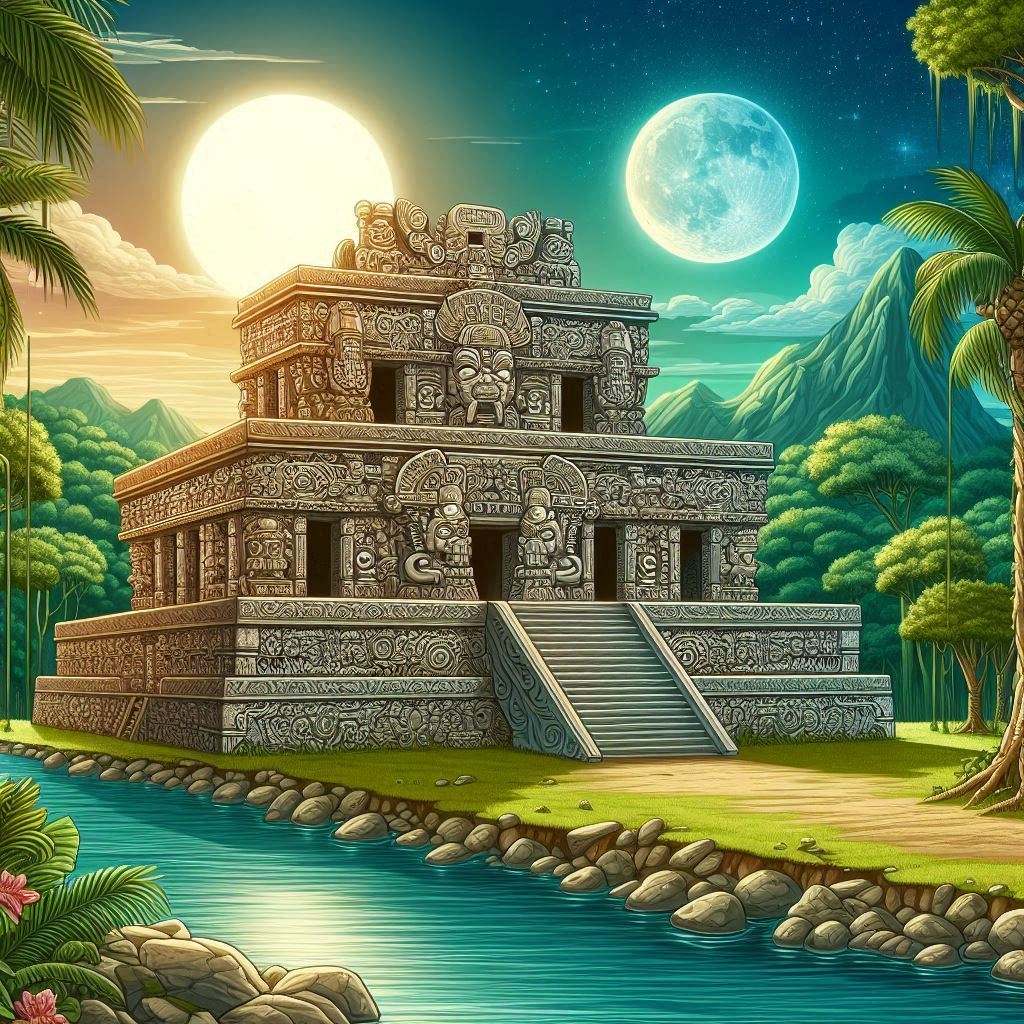
The Aztecs inhabited the Valley of Mexico and built their capital, Tenochtitlán, on an island in Lake Texcoco. Their religious ideology was deeply influenced by earlier Mesoamerican civilizations, and they expanded upon these traditions to create a complex cosmology. Central to their beliefs was the notion of tonalli (sacred animating force), which sustained both gods and humans. The gods, according to Aztec mythology, had sacrificed themselves to create the world, and humans were required to reciprocate with their own sacrifices to maintain the balance of the cosmos. The Aztec Tradition of Human Sacrifice
The sun god, Huitzilopochtli, and the rain god, Tlaloc, were among the most revered deities. Huitzilopochtli’s mythology was particularly significant, as he was believed to require regular nourishment from human blood to ensure the sun’s journey across the sky and the continuation of life. This belief underscored the Aztecs’ sacrificial practices, where the giving of life was seen as a necessity to sustain the universe.
The Ceremonial Calendar
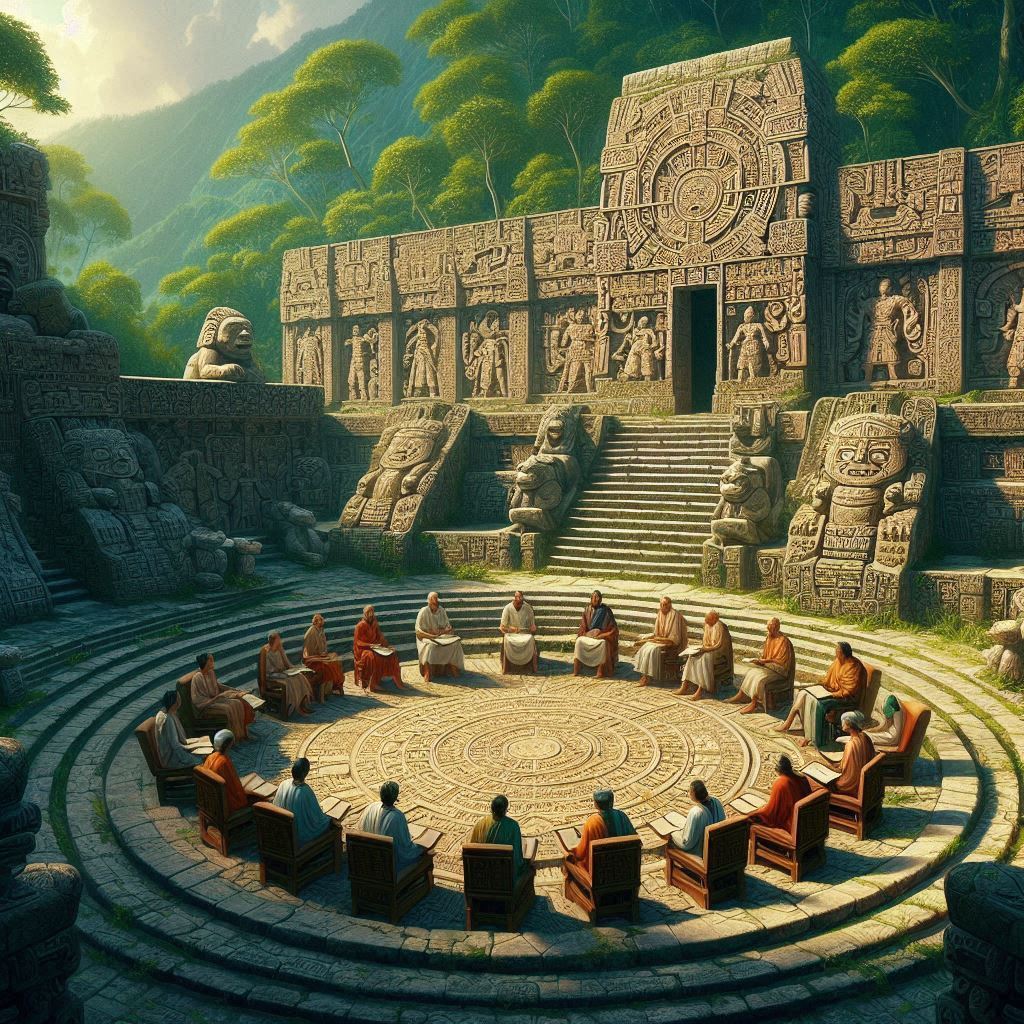
The Aztecs had a highly structured ceremonial calendar, consisting of 18 months, each with its own festival dedicated to different gods and aspects of life. Human sacrifice was a central element of many of these festivals, each tailored to the specific deity being honored. Among these ceremonies, the festival of Toxcatl stood out due to its elaborate rituals and profound significance.
The Aztec Tradition of Human Sacrifice
Toxcatl: The Embodiment of Tezcatlipoca
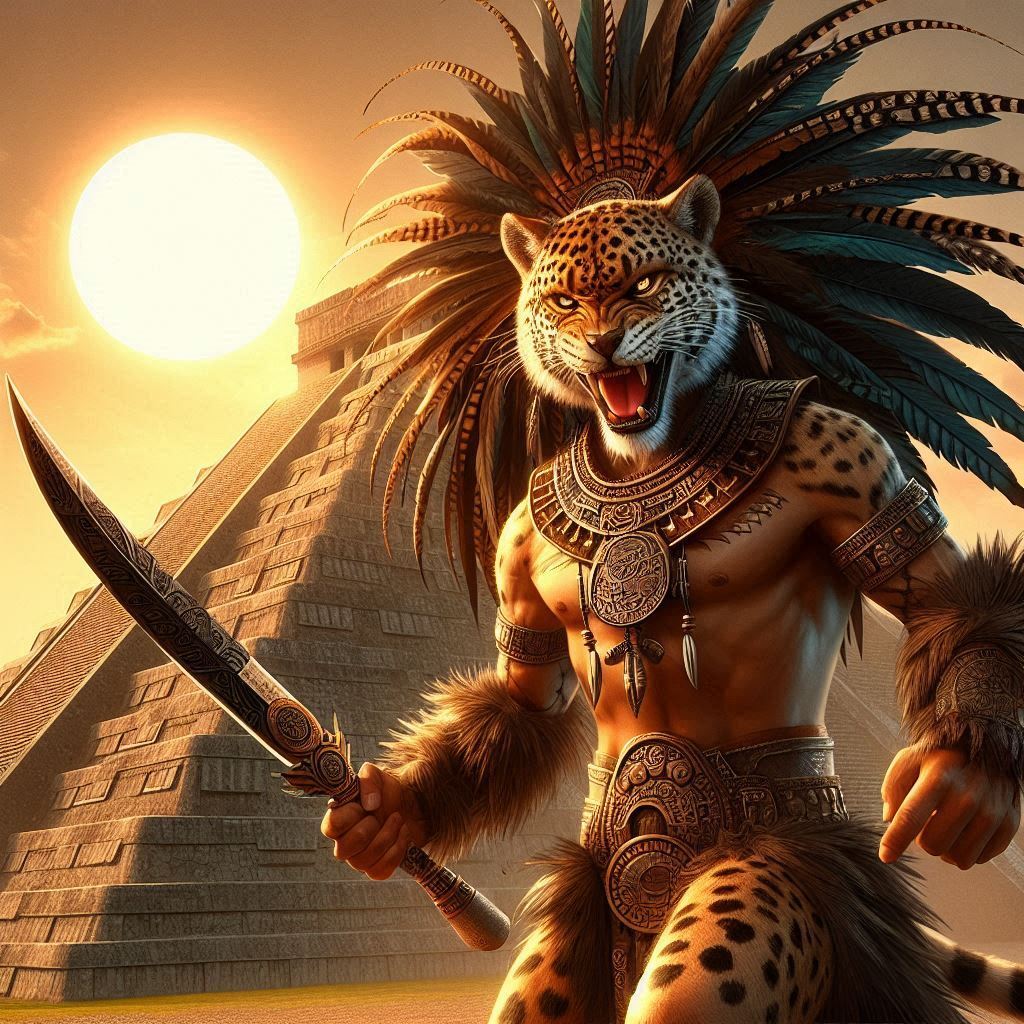
The Toxcatl festival was dedicated to Tezcatlipoca, the god of night, sorcery, and destiny. This festival was one of the most critical events in the Aztec calendar, symbolizing renewal and the cyclical nature of existence. A year before the festival, a young man of perfect physical appearance and noble character was chosen to embody Tezcatlipoca. This individual, often referred to as the ixiptla, lived in opulence and was treated with the highest respect, representing the god in human form.
The chosen one, who in this narrative we shall call Xolotl, spent the year living in a state of divine luxury. He was adorned with exquisite garments and jewelry, provided with the finest food, and accompanied by four maidens who symbolized goddesses. This period of reverence and indulgence was a stark contrast to the solemn culmination of his role.
The Aztec Tradition of Human Sacrifice
The Rituals and the Final Sacrifice
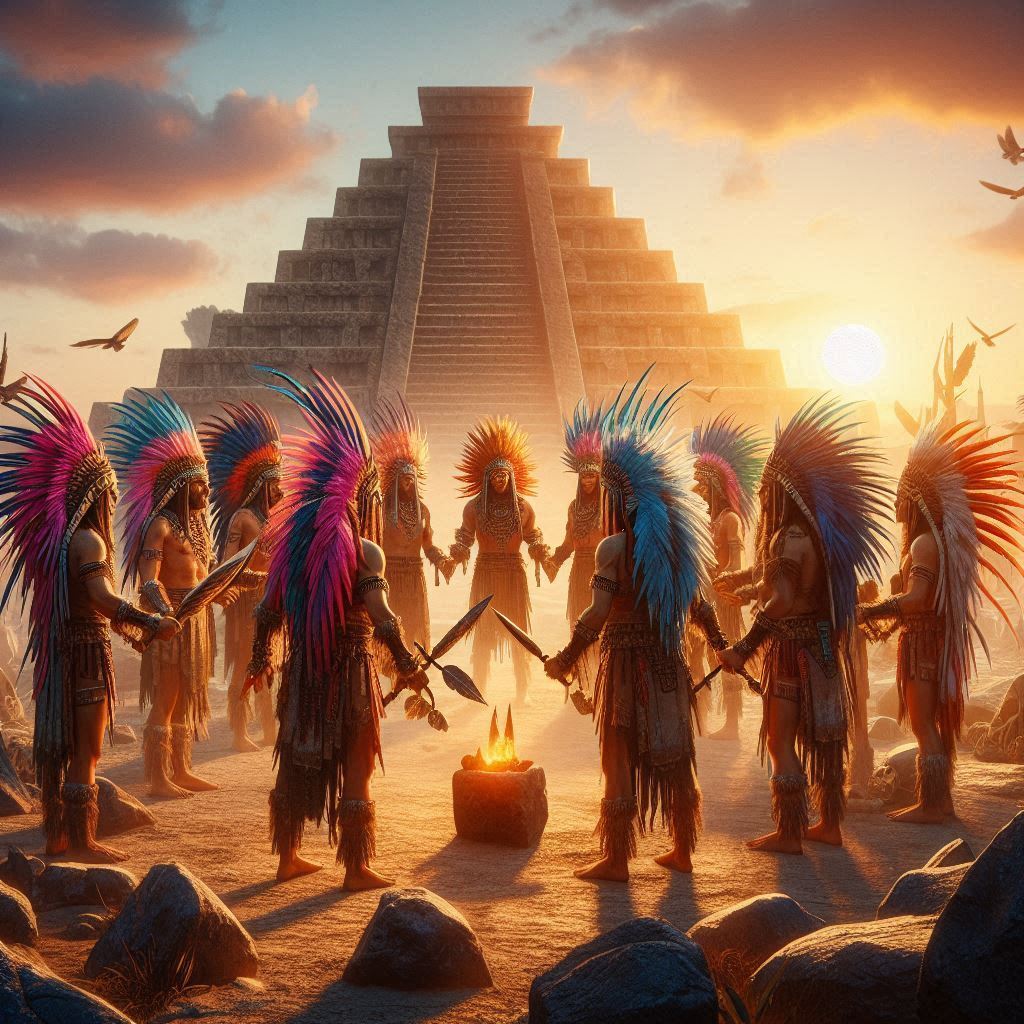
As the Toxcatl festival approached, the atmosphere in Tenochtitlán grew increasingly fervent. The city was meticulously decorated with flowers and banners, and the scent of copal incense filled the air. On the eve of the festival, Xolotl was ceremonially bathed and anointed with sacred oils, marking the beginning of the end of his divine year.
The festival began at dawn with grand processions, music, and dance, celebrating the gods and the universe’s cyclical nature. As the sun reached its zenith, the climax of the ceremony approached. Xolotl was led through the city, his path lined with citizens who watched with a mixture of reverence and sorrow. Upon reaching the Templo Mayor, the great temple dedicated to Huitzilopochtli and Tlaloc, he ascended the steps to the sacrificial stone.
At the summit, the High Priest, clad in elaborate ceremonial garb, awaited him. The priest’s face, painted with sacred symbols, reflected the gravity of the moment. Xolotl, embodying Tezcatlipoca, lay upon the stone, his chest exposed to the sky. The priest, holding an obsidian blade, performed the ritual with practiced precision. Xolotl’s heart was removed and offered to the gods, his lifeblood believed to nourish and sustain the divine forces. The Aztec Tradition of Human Sacrifice
The crowd below watched in solemn silence, their prayers and chants rising with the smoke from the sacrifice. The heart, a potent symbol of life and vitality, was a profound offering, signifying the people’s dedication and the depth of their spiritual commitment.
The Aftermath and Significance
The Aztec Tradition of Human Sacrifice
The conclusion of the sacrifice was followed by feasting and celebration, a communal reaffirmation of life’s continuity and the gods’ benevolence. The Aztecs believed that through these sacrifices, they ensured the sun’s movement, the rains’ arrival, and the fertility of the land. The ritual was not merely a brutal act but a deeply religious and symbolic gesture that affirmed their place in the universe and their relationship with the divine.
Human sacrifices, though central, were part of a broader system of offerings and rituals. The Aztecs also practiced bloodletting, where individuals offered their blood through self-inflicted wounds, and ritualistic offerings of food, flowers, and incense. These acts, large and small, were all woven into the fabric of Aztec spirituality, reflecting their understanding of life, death, and rebirth.
Cultural Perceptions and Modern Reflections
Today, the practice of human sacrifice is often viewed through a lens of horror and incomprehension. However, to the Aztecs, it was a sacred duty, a necessary act to sustain the cosmos and appease the gods. It is essential to approach this aspect of their culture with a nuanced understanding, recognizing the profound spirituality that underpinned their beliefs. The Aztec Tradition of Human Sacrifice
The legacy of the Aztecs and their rituals, including human sacrifice, provides valuable insights into the complexities of ancient civilizations. It challenges us to consider the diverse ways in which humans have sought to understand their place in the universe and the lengths to which they will go to maintain harmony with the divine.
In the grand tapestry of human history, the Aztec tradition of human sacrifice stands as a testament to the depth of religious conviction and the intricate relationship between humanity and the cosmos. It serves as a powerful reminder of the ways in which sacred ceremonies shape and define cultures, leaving an indelible mark on the collective memory of civilization.
